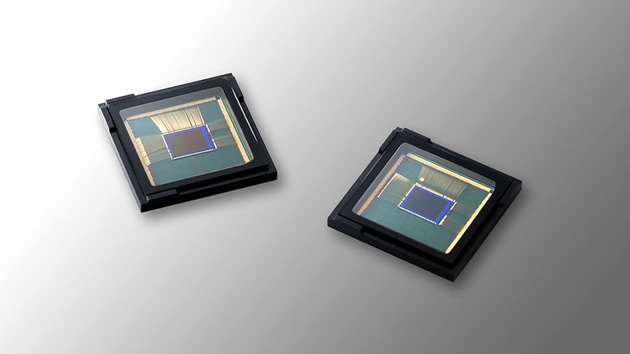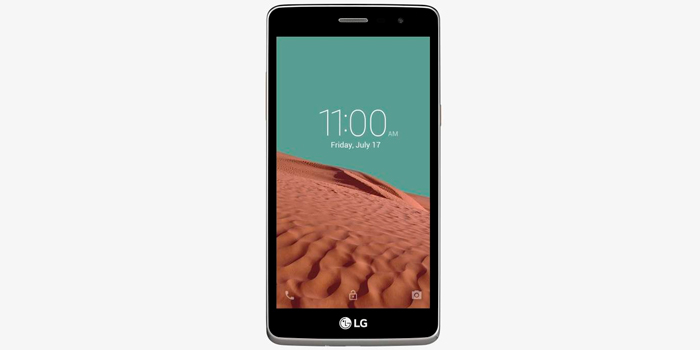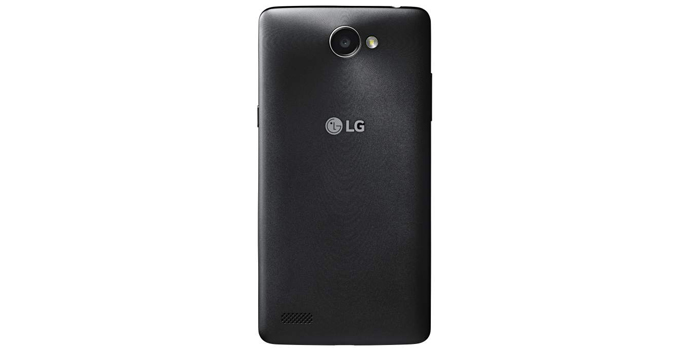"I want a good smartphone. My budget is Rs 10,000. What do you suggest?"
That is a query that we have been hearing increasingly of late, thanks in no small measure to the profusion of devices that have arrived in the market with decent hardware, good software and surprisingly low price tags. A few years ago, getting a smartphone for under Rs 10,000 (~$150) meant cutting a few spec and performance corners – the displays might not be that good, the processor might be a tad shabby, the cameras mediocre and so on. Today, however, it is possible to get a device that ticks most hardware and software boxes. And still does not get into five figure territory, as far as Rupees go. And we are not talking of ancient devices but relatively recent phones, all launched within the last year or so – the Xiaomi Redmi 2, the Xiaomi Redmi Note 4G, the YU Yureka, the YU Yuphoria, the Moto E (2nd generation), the Lenovo K3 Note, the Coolpad Dazen 1, the Lenovo A6000 Plus, the Lenovo A7000, the Microsoft Lumia 640, the Micromax Canvas Doodle 4, the An droid One series…and a few others besides.

Hence that question at the very beginning, as the Indian consumer graduates to a problem of plenty. It is a pleasant problem, but it is a problem nevertheless – from limited budgets and limited options to limited budgets and many more options.
We could have attempted to address this by simply posting a cumulative, comparative spec sheet, but then specs do not always tell the complete tale, do they? So we decided to take a question and answer and use-case-scenario based approach, working out which device(s) would be best for which scenarios. So if you are in the market for a good phone and have a budget that stretches not beyond Rs 10,000, go right ahead and figure out what meets your needs:
Forget everything else. I just want the best hardware. What is the best option of the lot here?

We would say that that is going to be a tight call between the recently released Lenovo K3 Note (Rs 9,999) and the YU Yureka (Rs 8,999). The K3 Note is – at the time of writing – the only device with a full HD display below the Rs 10,000 price point. The Yureka cannot match it in that department (it has a 5.5 inch display too but a 720p HD one), but where it will steal a march from the K3 Note – and the other devices in this list – is in packing in perhaps the most powerful processor at this price point: the 64-bit octa core Qualcomm Snapdragon 615 (the MediaTek 6752 on the K3 Note runs up good benchmark scores but is considered inferior by many). Android Lollipop, 2 GB RAM, 16 GB storage, 4G support, and 13.0-megapixel front facing and 5.0-megapixel rear facing cameras are the specs both devices share. The K3 Note does have a bigger battery at 3000 mAh (the Yureka has 2500 mAh), but then the Yureka comes with Cyanogen, one of the fastest and smoothest working versions of Android (yes, we know the question revolves around hardware but good software can make a significant difference to performance, and Cyanogen is very good indeed). In terms of looks and sound, the K3 Note is a step ahead, but then, the Yureka costs Rs 1,000 lesser. A tough choice, but if hardware is your fetish and your budget is restricted to Rs 10,000, these two are your best options.

If your budget is super tight and every penny spent hurts, then it is the Coolpad Dazen 1 or the Xiaomi Redmi 2 for you, both of which are available for Rs 5,999 (the Redmi 2 got a price cut recently). The Dazen 1 comes with a 5.0-inch 720p HD display, powered by a quad core Qualcomm Snapdragon 410 processor with 2 GB RAM, with 4G support and a 8.0-megapixel rear camera and a 5.0-megapixel front camera. The Redmi 2 is a more compact proposition, with a 4.7 inch 720p display, and sports the same processor, albeit with lesser (1 GB) RAM and 8 GB storage, which is expandable, as well as with 4G support. Both run Android 4.4, which is a tad old, but but for those wanting good hardware at a rock bottom price, they are both very good propositions. Hardware lovers will prefer the Dazen 1 but those looking for a good display and camera will be better served by the Redmi 2.
I just want a very good looking device, which works well. Which one do I go for?
Looks are not the forte of all the devices in this list. Barring one. The YU Yuphoria (Rs 6,999) might look like a copy of Lumia devices of the past but what cannot be denied is that its metal frame, jet black front and spherical camera unit are attention grabbers. It is in fact, the only prominent device in this category that rests on an aluminum frame. The white model with a gold colored frame is a looker. The design might seem familiar, but what the heck, the phone is still a looker. Importantly, it handles most basic tasks well and as long as you do not push into high-defintion gaming will keep ticking over nicely, courtesy its Qualcomm Snapdragon 410 processor backed up by 2 GB RAM. Want an alternative? Wait for the yellow (special) edition of the Lenovo K3 Note (Rs 9,999)!
I want a great touchscreen experience with a good display. The best option?
This gets to be a three legged race – on paper, there is none that matches the 5.5 inch full HD display of the Lenovo K3 Note (Rs 9,999). However, bring brightness and color into the equation and you will see the Redmi Note 4G and the Huawei Honor 4x (Rs 9,999) come into consideration, both of which sport 5.5 inch displays of 720p HD resolution. Asked to choose between the two, we would perhaps go for the Redmi Note 4G (now for Rs 7,999). In terms of pure touch experience, we think the Redmi Note 4G is one of the most responsive we have used in this price point – MIUI helps, we suspect.
I want a great camera. Is that possible in a phone below Rs 10,000?

A year ago, it wasn't. Now, it very much is. We would say that in the sub-Rs 10,000 belt, the Xiaomi Redmi Note 4G (Rs 7,999) and the Huawei Honor 4X (Rs 9,999) both boast very good 13.0-megapixel rear cameras and good front facing ones too – the one on the Redmi Note even tries to guess your gender and age (with occasionally entertaining results). If we had to pick one of the two, we would go with the Honor 4X, because its colors seemed more realistic and it captured just a but more detail than the Redmi Note 4G, which delivered slightly oversaturated colours (they do look good though!). At this point, we do also think that the InFocus M2 deserves a mention – no, it is not a barnstormer of a phone in terms of overall performance and its specs might seem modest as compared to the Redmi Note 4G and the Honor 4X (4.2 inch HD display, 1.3 GHz MediaTek processor, 1 GB RAM), but to get two very decent 8.0-megapixel cameras with flashes (yes, for both!) for as little as Rs 4,999 i s quite a deal in our opinion. And as we said earlier, those cameras are not for decoration – they actually work quite well.
It's all games and apps for me – and I want the latest OS too. Which phone below Rs 10,000 do you recommend?
This is pretty much a gimme for the YU Yureka (Rs 8,999). The Snapdragon 615 processor with 2 GB RAM lets it handle pretty much any game or app you throw at it. We would have liked a brighter display and perhaps louder sound, but in terms of handling high-end gaming with relatively few lags, this is perhaps the only phone in the range that can do so with a degree of ease (albeit with little extra heating). If sound and display do make a massive difference, we would pick the Xiaomi Redmi Note 4G (Rs 7,999), which is a brilliant performer, although it does tend to lag a bit more in high definition territory.
Super tight budget? Go for the Coolpad Dazen 1, with its Snapdragon 410 chip, 5.0-inch HD display and 2 GB RAM – for Rs 5,999, it delivers a lot.
I am the geek. I want the latest OS with regular updates and lots of tweaking options. Is it possible to get something like the Nexus in this price range?

The Nexus just got pricey, as we realised with the 6. However, that does not mean there are not tweakworthy and multi-featured operating systems in the sub-Rs 10,000 terrain for the geek squad. Android purists will love the Moto E (2nd generation) which at Rs 6,999, delivers pure Android with no overlays.
But once again if we had to pick one device for regular OS updates as well as the ability to tweak and customise the interface, we would pick the YU Yureka (Rs 8,999), which thanks to Micromax's tie-up with Cyanogen, gets regular updates (the phone got the Cyanogen OS 12 update recently and runs Android Lollipop already). Cyanogen might not seem as attractive and feature rich as Xiaomi's MIUI but it is heaven for those who want to change app icons, launch animations and a whole lot more. The lesser priced YU Yuphoria is a good option too, but the Yureka is by far the superior.
I love music. I want great sound. That possible at this price point?
Yes, indeed. And it really is all Lenovo here. If you prefer loudspeaker mode, we would recommend the A6000 Plus (Rs 7,499) with its dual stereo speakers, while if you are the type that has a good pair of headphones, look no further than the Dolby Atmos supporting Lenovo A7000 and K3 Note (Rs 9,999).
I am a heavy duty smartphone user and need a device whose battery does not let me down and comfortably lasts a day, if not more. Which one would you recommend?
We have realised that mAh counts are notoriously fickle when it comes to battery life, but if you feel reassured by having a big battery in your device then try the Lava Iris Fuel 60 which packs in a 4000 mAh battery and comes with a 5.0-inch 720p HD display, a quad core MediaTek processor, 1 GB RAM, 8 GB storage and has a very decent 10.0-megapixel rear camera. It was available for Rs 8,500 at some retailers. No, it is not exactly as powerful as the likes of the Redmi Note 4G or the Yureka, but it will last close to a day and a half of heavy use easily.
If you are looking for a very good combination of performance and battery life, then the contest boils down to a battle between the Redmi Note 4G (Rs 7,999), which has a 3100 mAh battery which easily lasts a day and then some, and the Lumia 640 (Rs 8,999), which has a smaller 2500 mAh battery but thanks to Windows Phone's less draining OS, pulls out as much time on a single charge just as easily. Give the fact that the Redmi Note 4G boasts a much better 13.0-megapixel camera and a brighter 5.5 inch display, our vote goes for it. The Honor 4X (Rs 9,999) which also sees off a day of heavy use easily with its 3000 mAh battery, is also an option worth considering.
I am not too much into games and apps. Can I just get a phone that handles most basic tasks well – calls, texts, etc. – and is also good at browsing and e-mail?

Get those handkerchiefs out, for it is here that the old favourite returns – if all that you seek is a phone that works efficiently and handles basic tasks brilliantly, we must say we cannot look beyond the Microsoft Lumia 640. The phone is retailing for as low as Rs 8,999 in some places and well, its tiled interface works with wonderful smoothness in alliance with the Qualcomm Snapdragon 400 processor with 1 GB RAM, and the 5.0-inch 720p display is very good. And call quality and battery life, in best Nokia (now Microsoft, we know!) tradition are very good indeed. There is no outstanding dazzling feature here. Just a lot of consistency for not too much money.
And if it is basic functionality you seek more than the smartness at an even lower price, do also consider a phone from another golden oldie – the Moto E (2nd generation). Nothing too flash, just solid performance at Rs 6,999.
What if I am able to stretch my budget a bit beyond Rs 10,000? Just a bit…
If you can take it all the way to Rs 10,999, we would say that the Phicomm Passion 660 comes into the picture with its full HD display, Qualcomm Snapdragon 615 processor, 2GB RAM and its 13.0-,megapixel and 5.0-megapixel cameras (we especially like the front facing camera). Stretch it a bit more to Rs 11,999 and the brilliantly designed Meizu M1 Note comes into contention with its 5.5 inch full HD display with the octa core MediaTek 6752 processor, 2 GB RAM and 16 GB RAM.
We are going to pin you down – if you had ONE phone to recommend below Rs 10,000, which one would it be?
That is a tough one, but all said and done, we must confess that the force is with the Lenovo K3 Note (Rs 9,999) at the moment, thanks to that full HD display, which marks it out from the competition. But remember, it's yet to be given the full review treatment. The geek squad might get tempted by the hardware and Cyanogen goodness of the YU Yureka (Rs 8,999), though. And for sheer consistency at a fantastic price, we think Xiaomi just made the Redmi Note 4G (Rs 7,999) a very good deal at Rs 7,999. As you can see, this is a problem of plenty here. Heck, it IS a nice problem to have.
Source:
The "I Want a Good Phone for Rs 10,000 ($150)" Guide!
 This newly-made stone wall proved the perfect way to test the depth of field you can get with the f2.0 lens. A wider aperture lets in more light but also gives you a pleasing shallow depth of field.
This newly-made stone wall proved the perfect way to test the depth of field you can get with the f2.0 lens. A wider aperture lets in more light but also gives you a pleasing shallow depth of field. This is a macro shot of a hand drawn illustration in charcoal - you can see the raised/embossed strokes clearly. Here too, the depth of field comes into play. Light from a single incandescent bulb.
This is a macro shot of a hand drawn illustration in charcoal - you can see the raised/embossed strokes clearly. Here too, the depth of field comes into play. Light from a single incandescent bulb. This early morning photo of a newspaper shows the resolving power of the lens: it has 6 physical lenses and the results are impressive. Sunlight from a single window.
This early morning photo of a newspaper shows the resolving power of the lens: it has 6 physical lenses and the results are impressive. Sunlight from a single window. This photo of a toy motorcycle was taken in pitch darkness and the only sources of light are two small candles (tea lights). The large, 1.3m light-collecting pixels are working here to deliver a photo that is impressively low on noise.
This photo of a toy motorcycle was taken in pitch darkness and the only sources of light are two small candles (tea lights). The large, 1.3m light-collecting pixels are working here to deliver a photo that is impressively low on noise. This outdoor photo (taken just after noon) will show you how the OnePlus 2 camera captures colours. We increased the saturation on this one (in-phone) to better highlight them.
This outdoor photo (taken just after noon) will show you how the OnePlus 2 camera captures colours. We increased the saturation on this one (in-phone) to better highlight them. The complicated textures and colours of this dilapidated fire hydrant cover are easily brought to the fore. Here again, the colour saturation has been increased and a vignette added to focus attention.
The complicated textures and colours of this dilapidated fire hydrant cover are easily brought to the fore. Here again, the colour saturation has been increased and a vignette added to focus attention. This image was in very low light - just street lamps! The detail on the pic indicates that it was captured at ISO 5017. Again, very impressive because the noise levels are kept very low. You can clearly see the white car's number plates.
This image was in very low light - just street lamps! The detail on the pic indicates that it was captured at ISO 5017. Again, very impressive because the noise levels are kept very low. You can clearly see the white car's number plates. This photo on a busy street at night tested the laser autofocus system and optical image stabilisation. The shutter speed on this one (automatically selected) was just 1/14 sec - which explains why the fast moving traffic is blurry. However, the subject was captured very clearly and all numbers/stickers on the motorcycle are clear. This was ISO 938.
This photo on a busy street at night tested the laser autofocus system and optical image stabilisation. The shutter speed on this one (automatically selected) was just 1/14 sec - which explains why the fast moving traffic is blurry. However, the subject was captured very clearly and all numbers/stickers on the motorcycle are clear. This was ISO 938.




















 The G4 Beat won't have a leather option like the G4. PHOTO BY HJK
The G4 Beat won't have a leather option like the G4. PHOTO BY HJK 
 The G4 Beat has a 5MP camera (13MP in Latin America). PHOTO BY HJK
The G4 Beat has a 5MP camera (13MP in Latin America). PHOTO BY HJK 






